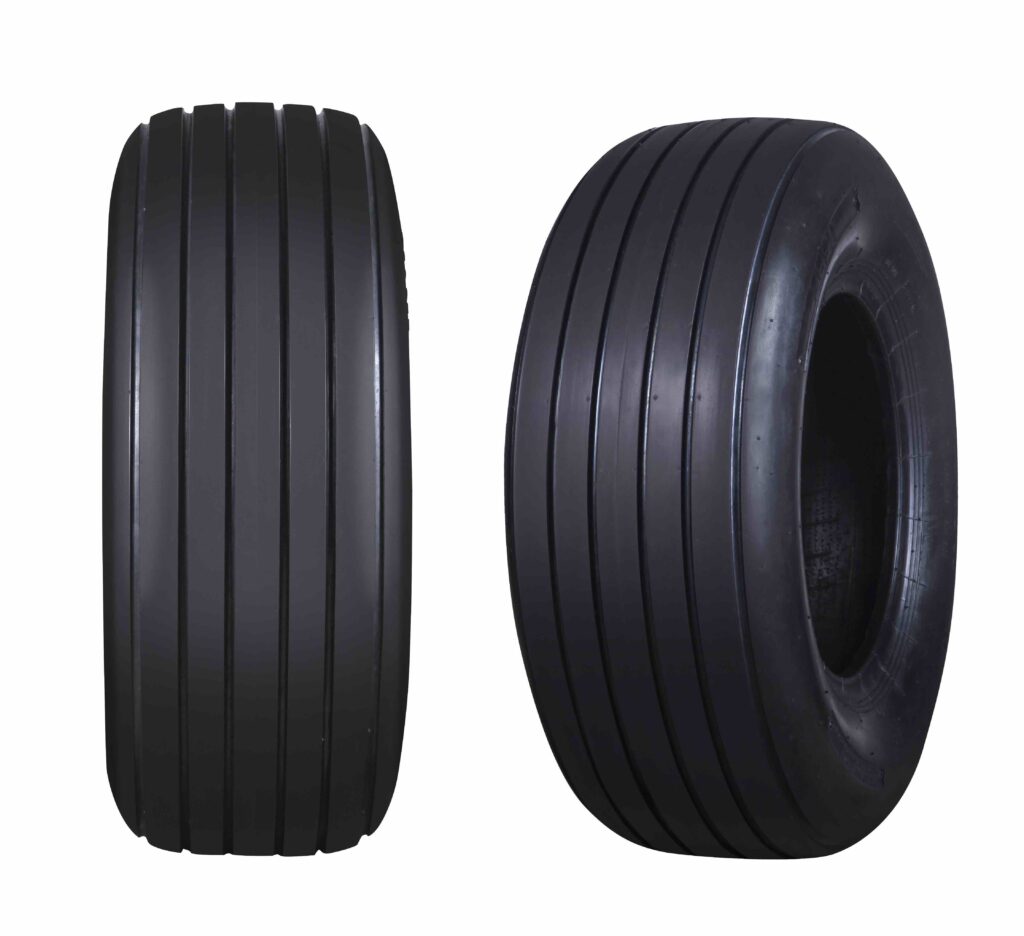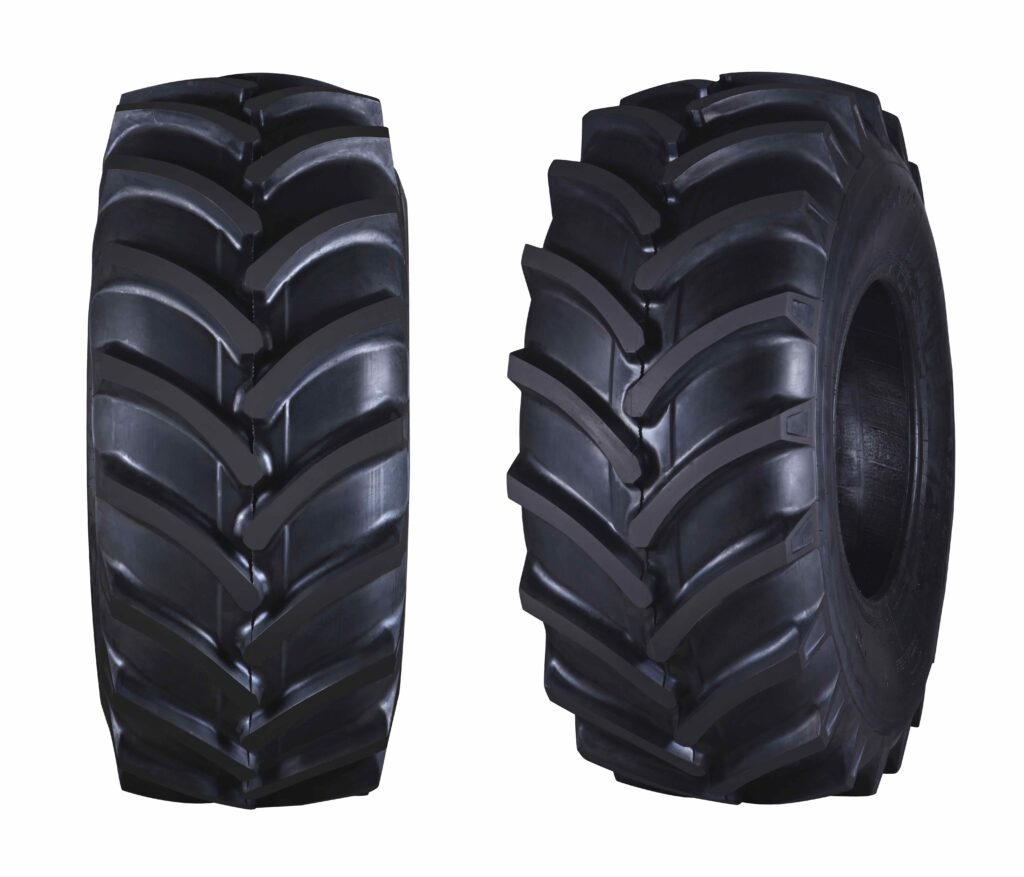Which Tire Tread Is Best for Your Agriculture Tires
Eric Johnson2023-09-25T01:58:13-05:00

In This Article:
How to Choose the Best Tire Tread for Your Ag Tires
Tire Tread: What’s the Difference Between Rib Tread and Lug Bar Tread?
Rib Tread Patterns Will Serve You Better for…
Bar Lug Tread Patterns Will Serve You Better for…
In a Nutshell—the Downside of Rib Tread Patterns
The Downside of Bar Lug Tread Patterns
The Right Tire Tread Is Crucial for Your Agriculture Tires
When You Need Agriculture Tires and Agricultural Inner Tubes, Count on Treadworld!
How to Choose the Best Tire Tread for Your Ag Tires
Tire tread is an important consideration when selecting agriculture tires because it affects the tire’s traction, treadwear, and overall performance, and therefore the efficiency and productivity of your farm equipment—whether for tractor tires or tires for loaders, backhoes, cultivators, harvesters, combines, seeders, you name it. In any agricultural application, the tread patterns and tire tread depth have a significant impact on the tire’s ability to grip the ground, resist slippage, and hold up to daily wear and tear. That’s especially true because you often need your agriculture equipment to operate on challenging terrain and in challenging conditions, such as mud, loose soil, steep inclines and wet weather. That’s why the tire experts at Treadworld are here to help you make your best choice between a rib tire tread design, and a lug bar tire tread design, to improve the efficiency and productivity or your agriculture equipment.
Tire Tread: What’s the Difference Between Rib Tread and Lug Bar Tread?
Rib tire treads and bar lug tire treads are two of the preferred types of tread patterns on farm implement tires, and as you would expect, they offer different benefits, advantages—and downsides.
Rib tire treads have a smooth and continuous pattern of ribs running around the circumference of the tire. These ribs are designed to provide better steering control and reduce soil compaction by distributing the weight of the equipment evenly across a larger surface area. For that reason, they are ideal for use on farm equipment that operates in lighter field conditions, such as tractors, planters, and cultivators. Additionally, the design is optimized for use on hard surfaces such as concrete, asphalt, and hard-packed soil. Overall, the rib design provides excellent steering control while reducing rolling resistance. Plus, rib treads offer excellent stability, good fuel economy, reduced soil compaction, and they tend to have a longer lifespan.
Bar lug tire treads, on the other hand, have a more aggressive tread pattern featuring a series of raised bars or lugs that extend across the tire’s surface. They are designed to provide maximum traction in challenging field conditions, such as loose soil, mud and snow. The deep lugs also help to self-clean the tire tread, preventing mud and debris from building up and reducing traction. Bar lug tire treads are ideal for use on farm equipment that operates in heavy field conditions, such as harvesters, sprayers, and loaders because they offer excellent traction and improved flotation—though they tend to wear out quicker than rib tread tires due to the higher amount of slippage they can experience in certain less-than-favorable conditions.
Rib Tread Patterns Will Serve You Better for…
Mowing and Turf Maintenance: if you are using equipment such as a lawnmower or a turf maintenance vehicle, a rib tire tread is preferred as it will minimize the potential for turf damage while providing excellent traction on the hard surfaces.
Transport: if your equipment needs to travel long distances on hard surfaces such as roads, a rib tire tread is ideal as its smoother surface offers reduced rolling resistance, making it more fuel-efficient, with less wear. Additionally, rib tires have better stability and maneuverability when traveling at high speeds on paved or hard-packed surfaces—which makes them a better choice for transporting livestock or transporting farm equipment and materials on public roads or between fields.
Harvesting: for equipment for harvesting operations—especially for crops like fruits and vegetables that require careful handling—that operate on hard-packed soil, a rib tire tread is often the best choice for harvester tires as it reduces soil compaction and enhances stability, allowing you to maneuver more effectively. The rib design of the tire tread also provides better steering control, making it easier to navigate between rows of crops without damaging them.
Livestock Feeding: Delivering feed to livestock often involves driving a feeding wagon over soft and loose surfaces where a rib tire tread on the feeder wagon reduces the chances of rutting, damaging the feeding area or getting stuck.
Orchard and Vineyard Applications: fruit orchards and vineyards require a tire tread that minimizes soil compaction, reduces damage to roots, and provides excellent stability when turning. The rib design provides a larger footprint that reduces soil compaction—which can reduce soil aeration and prevent water and nutrient uptake by the plant roots, essential for healthy growth in orchards and vineyards. Plus, continuous ribs provide excellent steering control, which allows you to maneuver through narrow rows and around obstacles without damaging roots or crops.
Planting and Seeding: planting and seeding require equipment that can operate in soft and loose soil, and the rib design provides a smooth surface that works to keep equipment from getting stuck.
Soil Protection: rib tire treads are also preferred when you need to protect the soil thanks to their larger contact area which reduces the pressure exerted by the tire on the soil, leading to lower soil compaction. This serves to preserve the soil structure and moisture content, making it easier to plant crops in the future.
General Farm Work: rib tire treads are often a better choice for general farming operations that involve a mix of different applications and surfaces because they provide good all-round performance in different conditions and are suitable for everything from plowing and planting to harvesting and transporting.
Comfort: rib tire treads provide a more comfortable ride compared to bar lug tire treads. They have a smoother surface that reduces vibration and noise, which can be a significant factor when you’re working long hours in the field. This makes them the ideal choice for operations that require prolonged use of farm equipment, such as plowing, planting and the like.
Bar Lug Tread Patterns Will Serve You Better for…
Muddy Conditions: since bar lug tire treads are designed with large, deep lugs that can dig into the soil—or snow—they provide excellent traction in muddy, wet conditions. The large, open spaces between the lugs allow for mud and debris to be cleared quickly, preventing the tire from becoming clogged and losing traction, reducing downtime.
Off-road Conditions and Rough Terrain: bar lug tire treads are better suited for off-road conditions where maximum traction is required because the lugs that can dig into the soil, providing excellent traction in soft or uneven terrain. This makes them ideal for farming activities such as plowing, tilling, and harvesting, where the equipment needs to be able to navigate through varied and challenging conditions. Additionally, the lugs can help absorb shocks and bumps, reducing the risk of damage to the tire or the equipment. This is important for farm equipment that needs to operate on rough or rocky terrain, such as when transporting heavy loads or moving equipment between fields.
Heavy Loads: designed to handle heavy loads, bar lug treads reduce the risk of damage to the tire or the equipment, making them ideal for heavy-duty farm equipment such as tractors and combines, which need to be able to handle heavy loads while also providing excellent traction.
Hilly Terrain: lugs allow for better grip on steep inclines and declines, reducing the risk of slippage and increasing safety—which is important for farm equipment that needs to operate on hills and inclines, such as during terracing or irrigation.
Loose Gravel: bar lug tire treads can provide better performance on loose gravel surfaces because the deep lugs can penetrate the surface, providing traction and stability on unstable terrain.
In a Nutshell—the Downside of Rib Tread Patterns
Next, we’re summing up the down sides of these two tread patterns. Rib tread agriculture tires are not as aggressive as bar lug tires and can have limited traction in wet or loose soil conditions—which can result in reduced productivity, especially when operating heavy equipment like harvesters, sprayers, or loaders. While generally rib tires will last longer when used in ideal condition, the continuous ribs can wear down faster when used in rough terrain or challenging conditions—leading to a shorter lifespan and the need for more frequent replacements. Finally, rib tread tires are not designed for use in snowy or icy conditions and can provide reduced traction and—a significant disadvantage for farmers who operate equipment in colder climates.
The Downside of Bar Lug Tread Patterns
Bar lug tread agriculture tires have open spaces between the lugs, which can cause soil compaction when used on softer, wetter soils. This can lead to reduced productivity and lower crop yields, especially in fields where soil compaction is already a problem. Additionally, bar lug treads tend increase rolling resistance, which can reduce fuel efficiency and increase operating costs. Bar lug tires are not suitable for use on hard surfaces like roads or concrete, as those conditions can cause excessive wear and tear on the tire, and reduce handling and control. Plus, there is the comfort factor. Bar lug tires can create a rougher ride than rib tread tires, which can reduce operator comfort and increase fatigue, which can be significant for farmers who operate equipment for long periods.
The Right Tire Tread Is Crucial for Your Agriculture Tires
You want to make the right choice for the tire tread of your ag tires in the interest of maximizing the tires’ performance, the performance and efficiency of your farm implements and the overall productivity of your farming operations. Take the time to consider which tire tread will serve you best.
When You Need Agriculture Tires and Agricultural Inner Tubes, Count on Treadworld!
When you’re looking for the best agricultural tires, we’ve got you covered here at Treadworld, in a wide range of RubberMaster styles and sizes. We also have a huge selection of agricultural inner tubes—extreme service tubes, implement tubes, and tractor tire tubes for both bias and radial tires. All our RubberMaster Agricultural Tires are manufactured to exacting specs then triple-checked and X-rayed for dependable quality that won’t let you down, and all our RubberMaster Agriculture Tubes undergo several strict quality checks to provide you with the long-lasting, high performance quality you want. Easy ordering and fast shipping, plus your satisfaction is always guaranteed with our no-hassle Ultimate Advantage Warranty. Don’t hesitate to contact our tire experts via live chat, or email with any questions you may have, and to get the farm tires and implement tires and tubes you want—or the perfect trailer tires, ATV tires, UTV tires, golf cart tires, lawn and garden tires and many others, plus tubes—from our extensive selection. Or use our Treadworld Product Selector Tool to help you find exactly what you want, on our home page.
